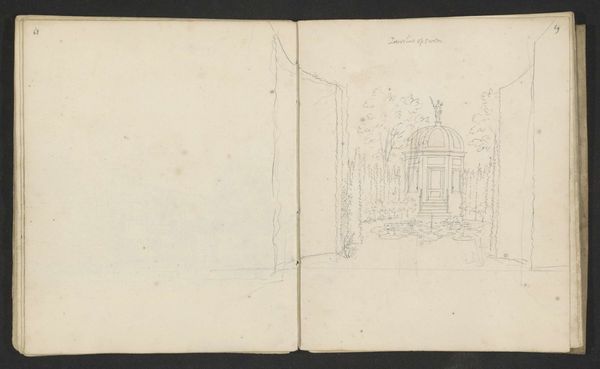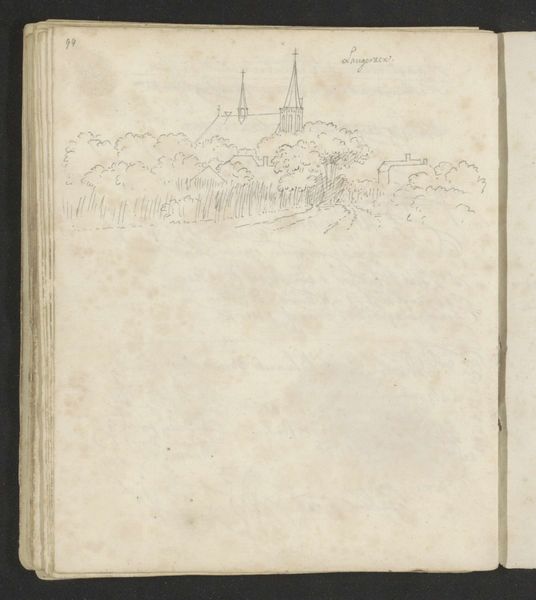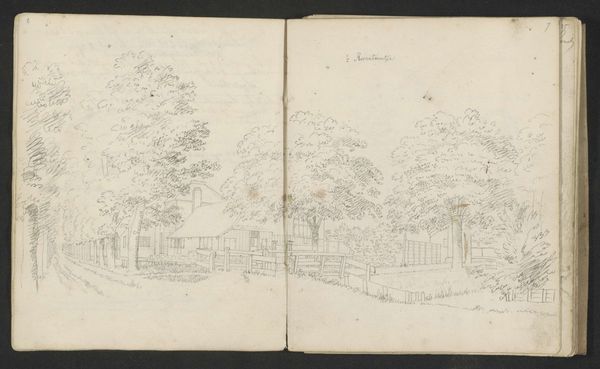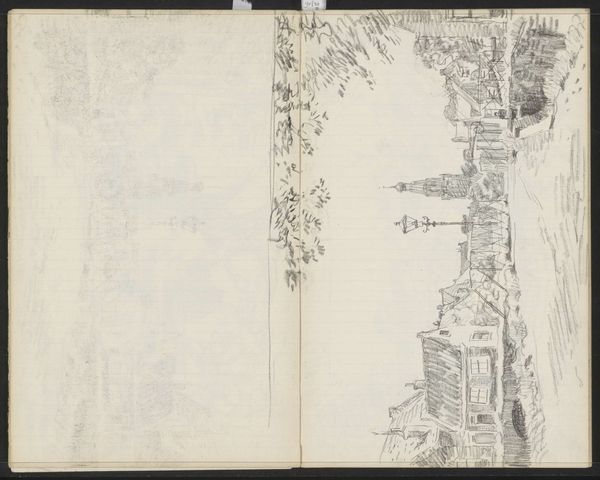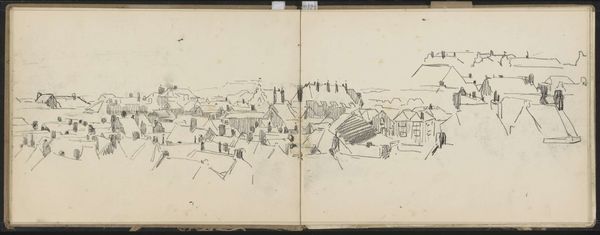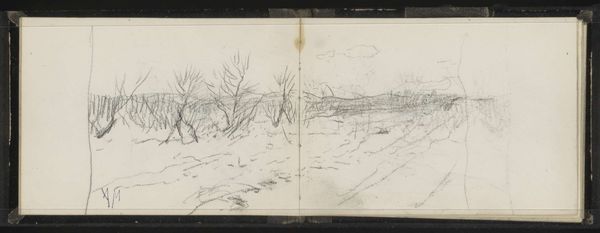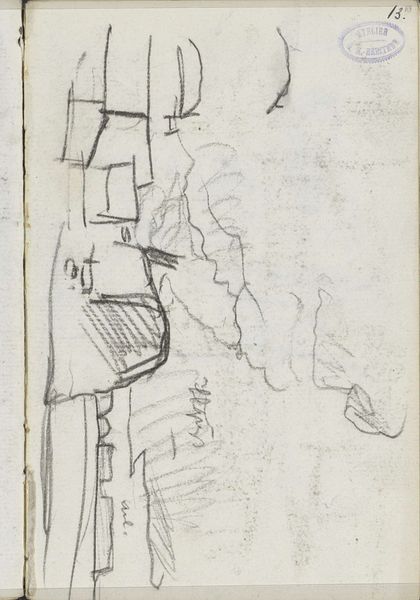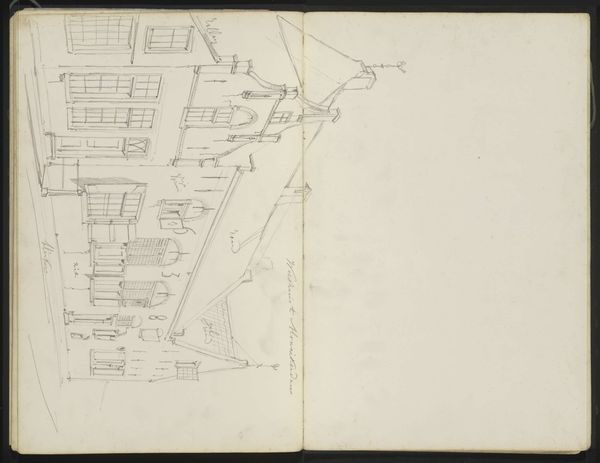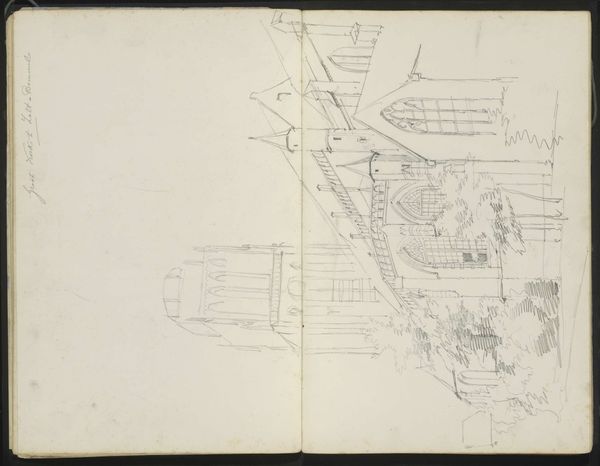
Stadsgezicht met waarschijnlijk de Westerhal te Amsterdam c. 1728 - 1732
0:00
0:00
drawing, paper, pen
#
drawing
#
dutch-golden-age
#
pen sketch
#
sketch book
#
hand drawn type
#
landscape
#
paper
#
personal sketchbook
#
sketchwork
#
pen-ink sketch
#
line
#
pen work
#
sketchbook drawing
#
pen
#
cityscape
#
storyboard and sketchbook work
#
sketchbook art
Copyright: Rijks Museum: Open Domain
Curator: This is Cornelis Pronk's "Stadsgezicht met waarschijnlijk de Westerhal te Amsterdam," a pen drawing on paper from around 1728 to 1732. Editor: There's an appealing lightness to this pen sketch. It almost feels ephemeral, like a memory glimpsed through a screen of bare trees. Curator: Pronk's positioning of the trees in the foreground creates a very intentional framing device. In 18th-century Dutch society, such cityscapes were popular as emblems of civic pride and economic prowess. Editor: The method of quickly sketching what we see makes me wonder about the urban labor behind its production, from the paper itself to the ink used for the drawing. What was the reality for those producing the very materials Pronk employed? Curator: Absolutely, and we must not forget the context of Amsterdam itself during this period. It was a global hub, enriched by colonial trade, though of course that wealth was built on exploitation and slavery. Consider, the paper on which this drawing exists could be linked to these trades, embedding the drawing in an uncomfortable web of socioeconomic relations. Editor: It does raise important questions about where beauty intersects with historical injustice. This artwork is deceptively serene. Yet when you really look at it as a material object, as labor manifested, you can detect echoes of this larger economic reality, these obscured power dynamics. Curator: This image, though seemingly just a sketch, subtly participates in this visual rhetoric. The orderly architecture is framed within this picturesque, natural setting. Editor: To me, it acts as a ghostly echo of that past, revealing through its simple medium the connections between commerce, consumption, and art making during the Golden Age in Amsterdam. It reminds us how important material analysis is when contextualizing social structures. Curator: A sobering reminder, indeed. Thinking about these complexities offers new layers of insight into an artwork's purpose. Editor: I think it is also imperative to look at the drawing techniques employed here, which shows how simple lines on a canvas can unearth such complex stories.
Comments
No comments
Be the first to comment and join the conversation on the ultimate creative platform.
